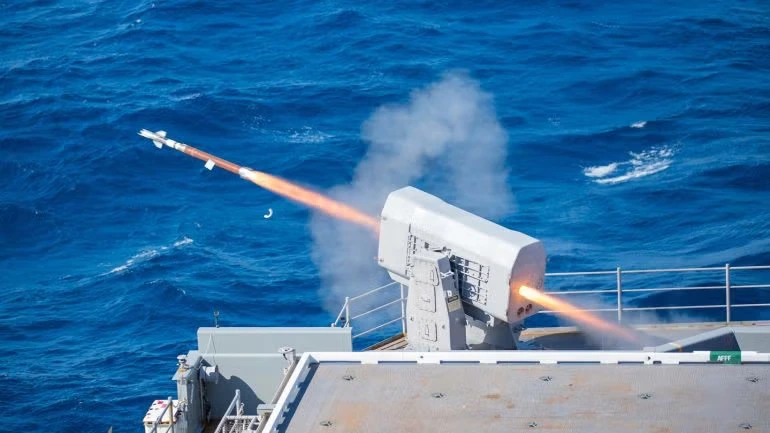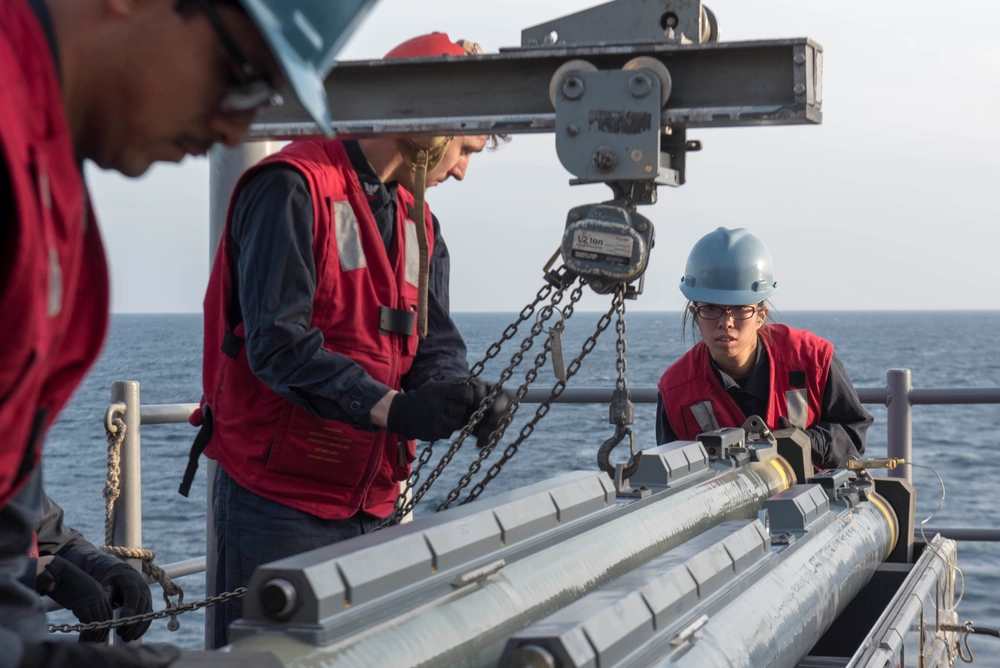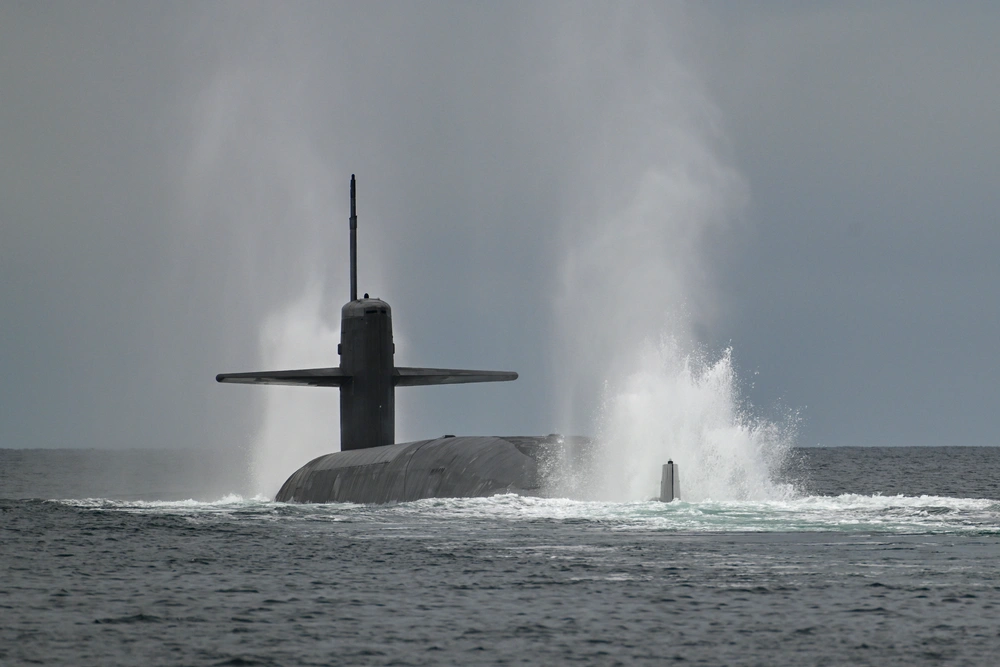US Navy receives its 250th MK49 RAM air defense system, the last line of defense of many of its ships
- By Sandboxx
Share This Article

Today, naval and air power are closely linked. Warships and submarines are threatened significantly more by enemy aircraft, missiles, and drones than by other warships. To ensure the protection of its naval assets, the U.S. Navy relies on a layered air defense umbrella. The MK49 RAM air defense system has been a main part of that umbrella. And this week, Raytheon delivered the 250th MK49 RAM to the U.S. Navy this week.
Designed to protect U.S. warships of all sizes, the MK49 RAM Guided-Missile Launching System (GMLS) is a necessary safety net for Navy assets operating in non-permissive and semi-permissive operational environments. The air defense munition can be fitted to warships of varying sizes, including 220-foot corvettes, 400-foot frigates, and all the way to 1,100-foot nuclear-powered aircraft carriers.
In many ways, the MK49 RAM is the last line of defense for U.S. warships against air threats.
The MK49 RAM can be equipped with the RIM-116 missile, which can reach speeds of over Mach 2 (more than 1,500 miles per hour) and has a range of around six miles.
The air defense system can reliably counter anything from small unmanned aerial systems – which are becoming more prolific in the modern battlefield – to fighter jets to advanced anti-ship cruise missiles.
“The RAM missile system has been a cornerstone of naval defense capabilities for decades, and this 250th GMLS delivery is a testament to the important role it plays in defending U.S. and allied forces,” Barbara Borgonovi, president of Naval Power at Raytheon, said in a press release.

In addition to the U.S. Navy, the German, Greek, Egyptian, Japanese, South Korean, Mexican, Dutch, Saudi, Qatari, Turkish, and Emirati navies also use the RAM for air defense.
“As we continue to modernize and expand the deployment of RAM, it remains a critical asset in protecting our sailors and ships from evolving threats,” the Borgonovi added.
According to the company, the 250th system will be deployed to USS Pittsburgh, a newly built San Antonio-class amphibious transport dock.
The need for capable air defense systems is becoming increasingly important as the Navy faces a diversified set of threats. For example, in the Red Sea, Navy surface combatants and aircraft carriers have been under attack from Houthi suicide drones on a regular basis. Although F-35C, F/A-18 Super Hornet, and EA-18G Growler fighter jets have been flying combat air patrols in anticipation of such attacks, often it falls to air defense systems from warships to deal with incoming threats.
But the real threat comes from China. The Chinese military spends spending hundreds of billions of dollars every year to increase its capabilities. As part of this military spending, Beijing is upgrading its air power capabilities with the clear goal of being able to target and attack U.S. surface vessels. If a war with China were to break out, the Chinese military would use a combination of ballistic and cruise anti-ship missiles and drones to sink or damage U.S. aircraft carriers. The MK49 RAM could be what stands between them and success.
Feature Image: A RAM launcher fires a RIM-116 missile, 2021. (U.S. Navy/Petty Officer 1st Class Robert Stamer)
Read more from Sandboxx News
- $580 million contract awarded to Raytheon for new Navy jammer
- The incredible true story of American fighters taking on an Iranian drone swarm and winning
- Canada’s superior C7 and C8 – Service rifles from around the world
- Unusual and unconventional artillery shells
- Air Force has revealed world’s first two AI-piloted fighter drones
Related Posts
Sandboxx News Merch
-

‘AirPower’ Classic Hoodie
$46.00 – $48.00Price range: $46.00 through $48.00 Select options This product has multiple variants. The options may be chosen on the product page -

‘Sandboxx News’ Trucker Cap
$27.00 Select options This product has multiple variants. The options may be chosen on the product page -

‘Kinetic Diplomacy’ Bumper Sticker (Black)
$8.00 Add to cart

Sandboxx
The editorial team at Sandboxx.
Related to: Airpower

Can older candidates make it through special operations selection?

New advances in submarine detection could upend nuclear deterrence as we know it
Sandboxx News
-

‘Sandboxx News’ Trucker Cap
$27.00 Select options This product has multiple variants. The options may be chosen on the product page -

‘AirPower’ Classic Hoodie
$46.00 – $48.00Price range: $46.00 through $48.00 Select options This product has multiple variants. The options may be chosen on the product page -

‘AirPower’ Golf Rope Hat
$31.00 Select options This product has multiple variants. The options may be chosen on the product page -

‘Sandboxx News’ Dad Hat
$27.00 Select options This product has multiple variants. The options may be chosen on the product page
